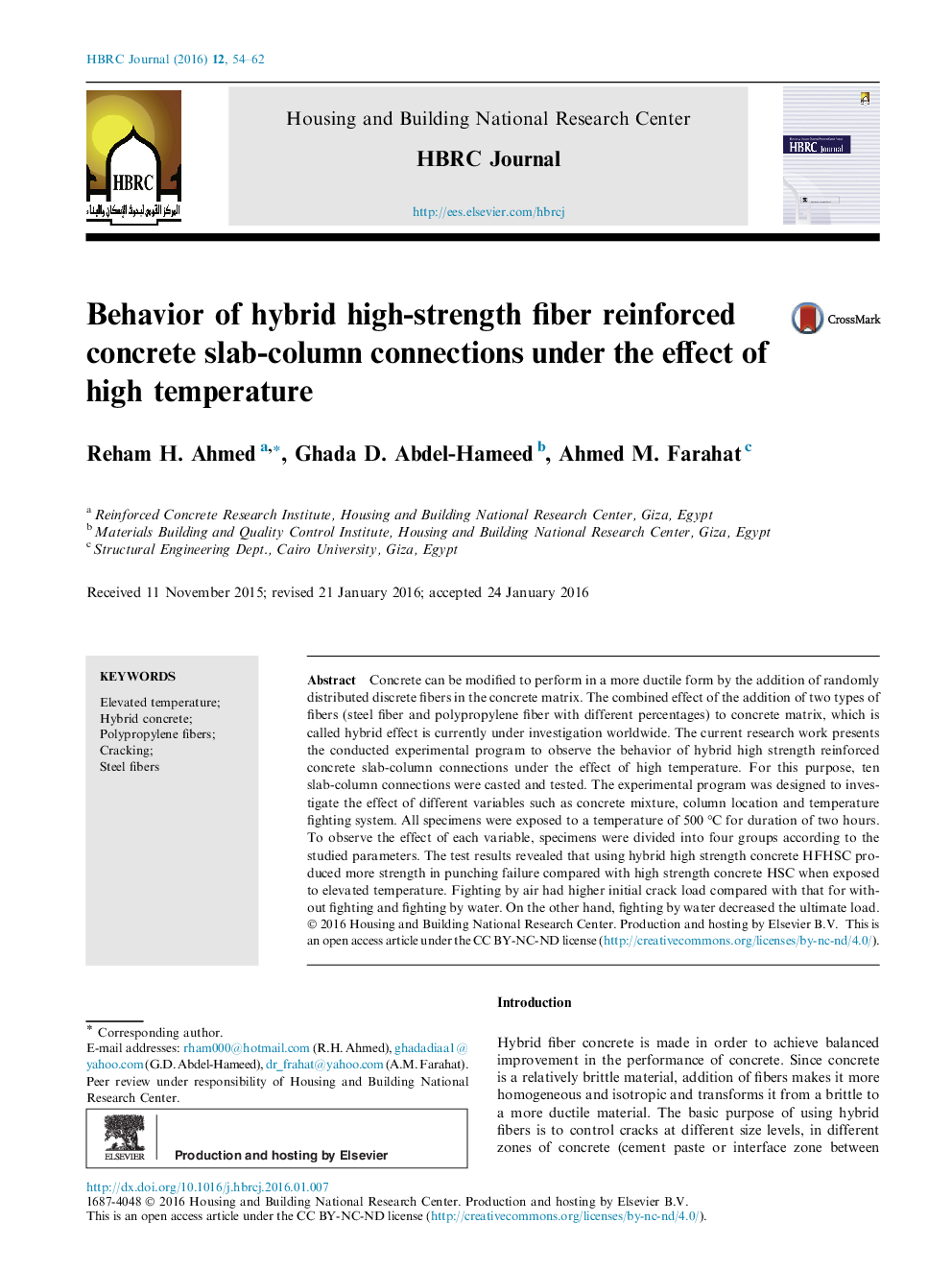| Article ID | Journal | Published Year | Pages | File Type |
|---|---|---|---|---|
| 274601 | HBRC Journal | 2016 | 9 Pages |
Concrete can be modified to perform in a more ductile form by the addition of randomly distributed discrete fibers in the concrete matrix. The combined effect of the addition of two types of fibers (steel fiber and polypropylene fiber with different percentages) to concrete matrix, which is called hybrid effect is currently under investigation worldwide. The current research work presents the conducted experimental program to observe the behavior of hybrid high strength reinforced concrete slab-column connections under the effect of high temperature. For this purpose, ten slab-column connections were casted and tested. The experimental program was designed to investigate the effect of different variables such as concrete mixture, column location and temperature fighting system. All specimens were exposed to a temperature of 500 °C for duration of two hours. To observe the effect of each variable, specimens were divided into four groups according to the studied parameters. The test results revealed that using hybrid high strength concrete HFHSC produced more strength in punching failure compared with high strength concrete HSC when exposed to elevated temperature. Fighting by air had higher initial crack load compared with that for without fighting and fighting by water. On the other hand, fighting by water decreased the ultimate load.
